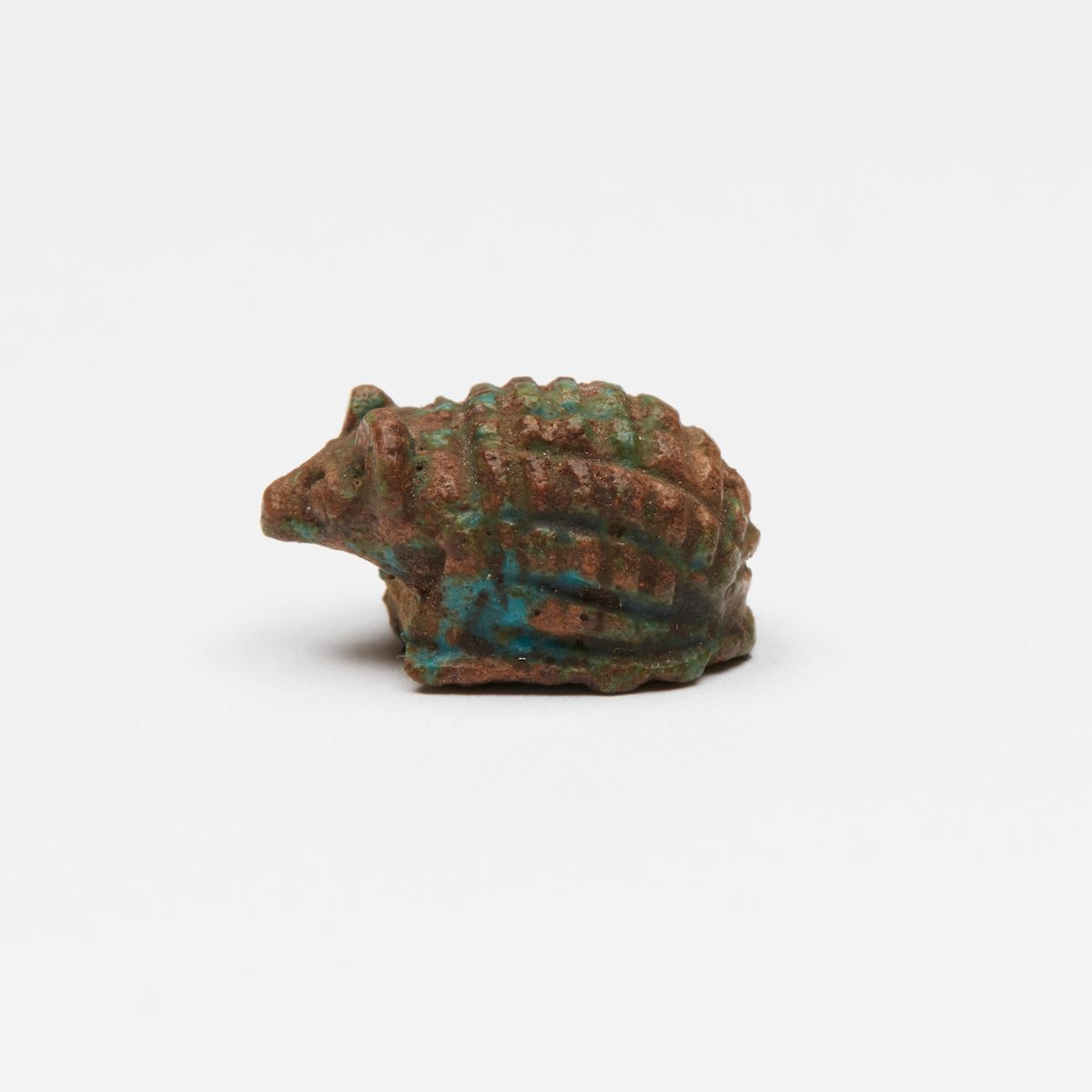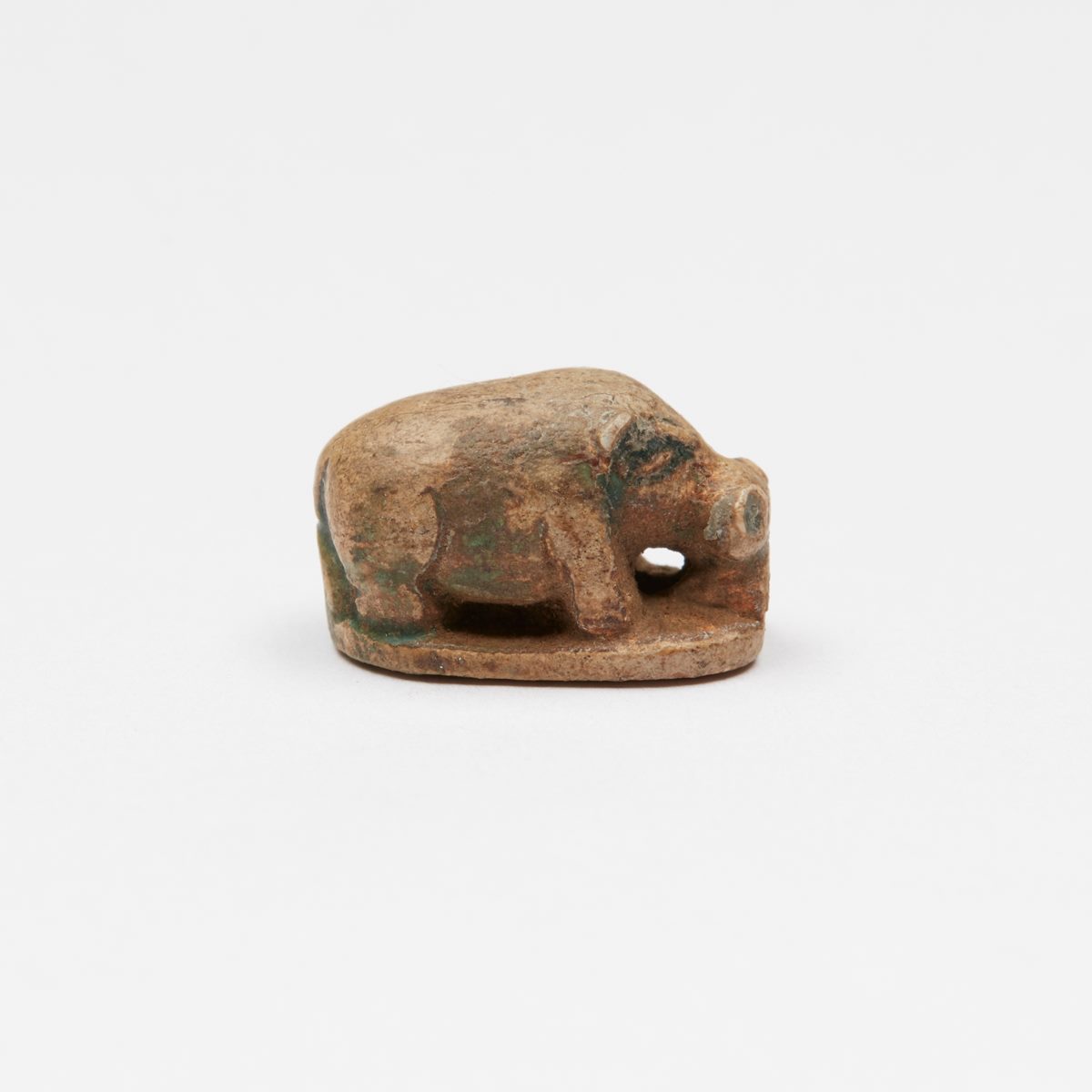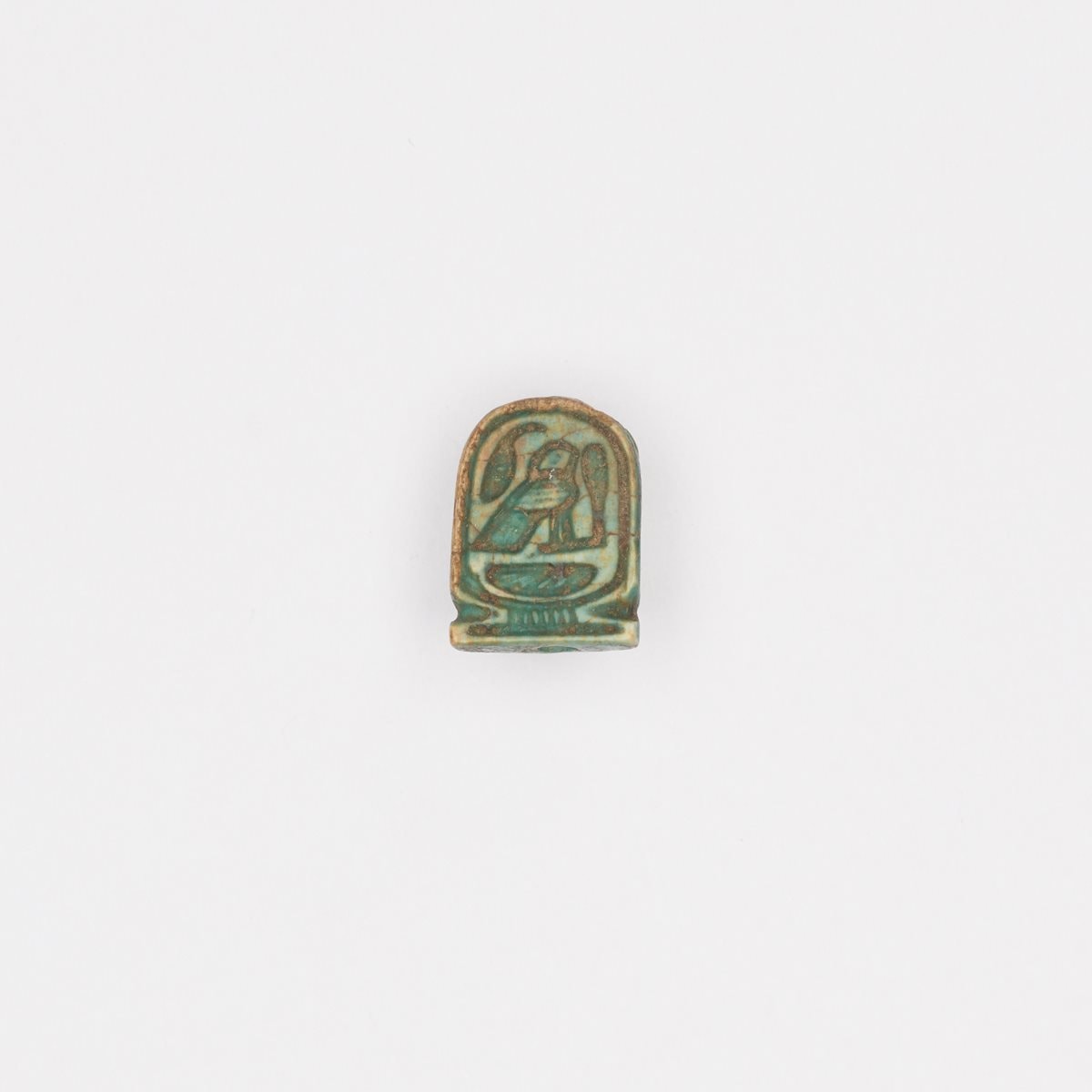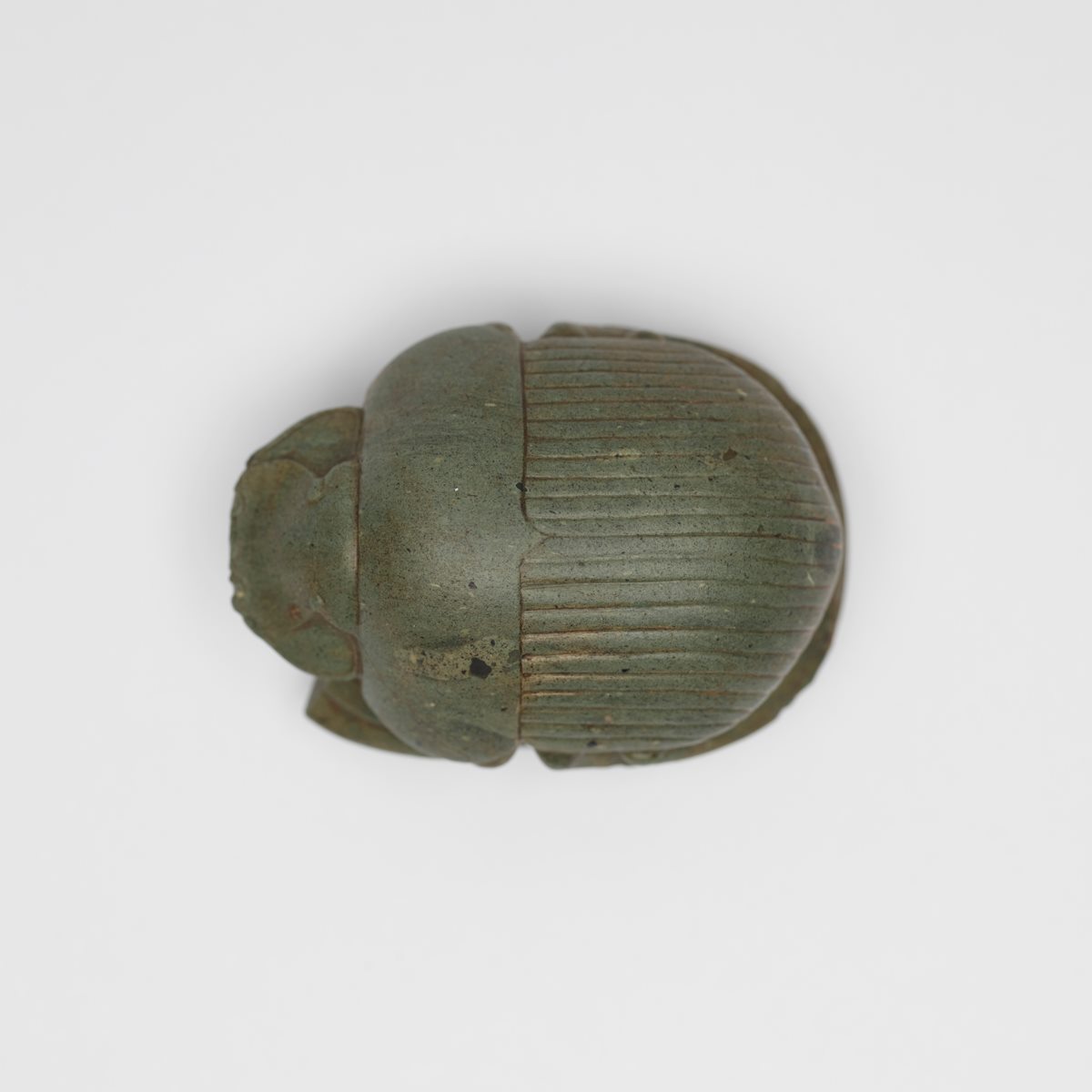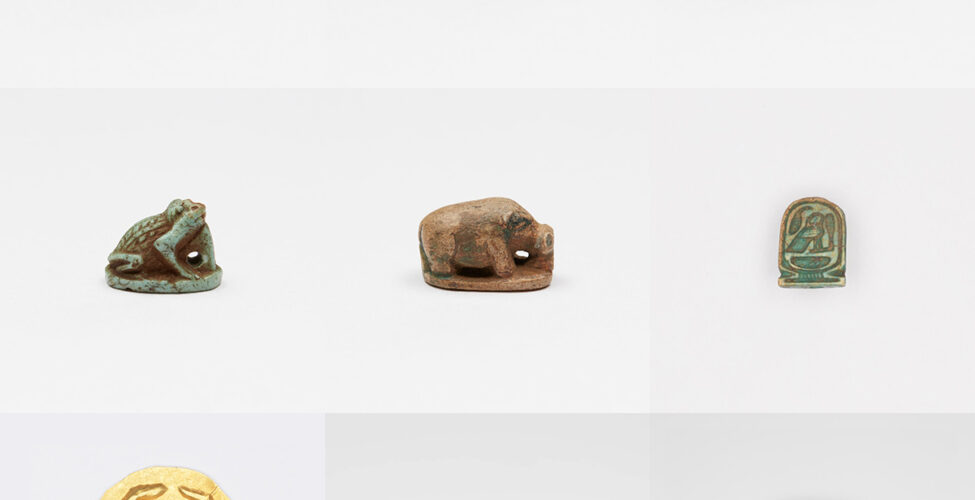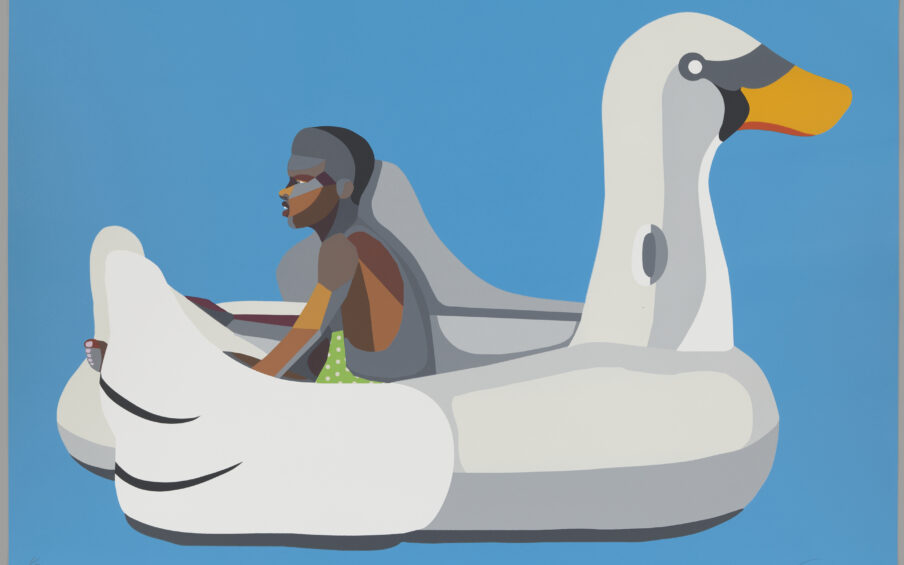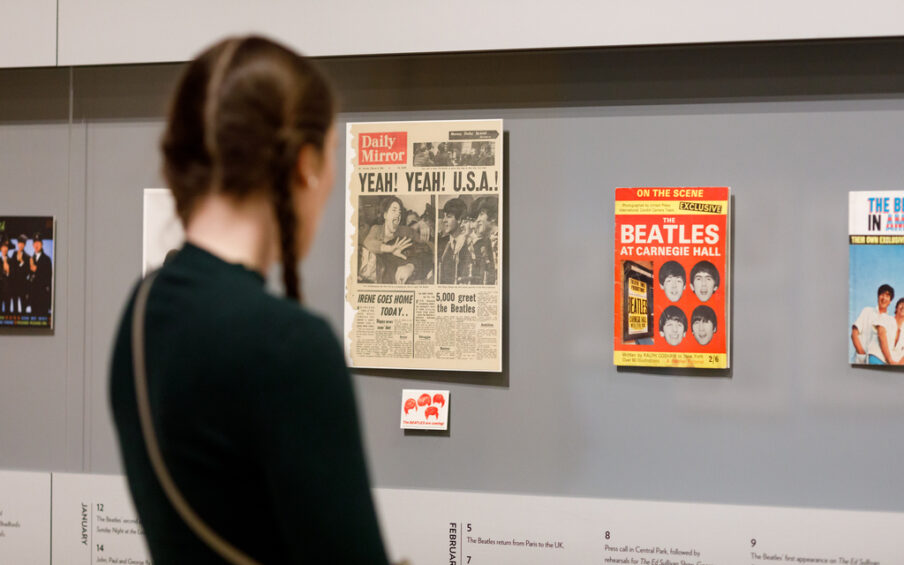“In ancient Egypt, scarab beetles symbolized dawn, life, and rejuvenation. These associations made the scarab beetle the most popular shape for amulets and personal seals. Other auspicious forms were also used as amulets. The annual floodwaters of the Nile River Valley could be a force of destruction but also regeneration. Amulets in the shape of animals—like this hare, hedgehog, frog, hippopotamus, and duck—were potent symbols of the return of life each year.
These exquisitely rendered amulets are the smallest and most ancient objects in the Museum’s collection. Most are less than a couple of centimeters in length. Tiny and precious, they were also objects of great personal significance and protective power. Drilled holes allowed the amulets to be strung and worn close to the body, and inscriptions carved on the base often had devotional and protective meanings, or could be used to identify the owner. Physically small, they speak to an extraordinary cosmology built on cyclical renewal, and the power of small things to shape one’s life.”
—Jeannie Kenmotsu, Japan Foundation Associate Curator of Japanese Art and Interim Head of Asian Art
The Gayer-Anderson Collection of Ancient Egyptian Scarabs and Seals



